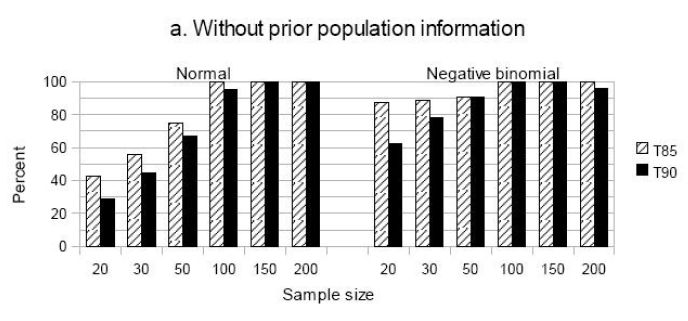VOLUME 6 NUMBER 1 (January to June 2013)

Philipp. Sci. Lett. 2013 6 (1) 029-038
available online: February 21, 2013
*Corresponding author
Email Address: aolluisma@gmail.com
Received: September 2, 2012
Revised: December 27, 2012
Accepted: December 27, 2012
SHORT COMMUNICATION
Effects of migration patterns onestimates of dispersal rates inferredfrom genotypic data: a simulationbasedstudy focused on the softwareSTRUCTURE
by Maia H. Malonzo1,2, Rachel G. Ravago-Gotanco1, Arturo O. Lluisma1,*
1Marine Science Institute, University of the Philippines, 1101 Quezon City
2Current Address: Department of Information and Computer Science, Aalto University School of Science, Helsinki, Finland
2Current Address: Department of Information and Computer Science, Aalto University School of Science, Helsinki, Finland
Recent developments in the analysis of genetic datanow make possible the direct measurement ofmigration rates through individual-basedassignment methods at ecological time framesrelevant for resource management. While severalsoftware implementing these assignment methods have beenexamined for accuracy under various conditions of spatialpatterns and rates of gene flow and population size, previousanalyses have not examined the effects of temporal variations indispersal rate on assignment accuracy. In this study, weevaluated the assignment accuracy of the widely used software,STRUCTURE, using simulated genetic datasets generated toreflect two patterns of temporal variation in dispersal rate: anormal distribution and a negative binomial distribution, thelatter reflecting a pattern of migration commonly observed innatural populations in which the movement of a large number ofmigrants into the sink population is a rare event. We alsoevaluated the accuracy of different assignment models andvarying sample sizes. The results of the simulations suggest thatat the mean migration rate of 5 individuals per generation,STRUCTURE exhibits greater assignment accuracy from anegative binomial distribution relative to a normal distribution atsmaller sample sizes of 20-50 individuals. This however isattributed to greater population structure among populations inwhich migration followed a negative binomial distribution, andits effect on recovering more accurate assignments. At samplesizes of 100 to 200 individuals, assignment accuracy was similarfor the two distributions. Increasing the sample size generallyresulted in reduced specificity in classification. At the largersample sizes, increasing numbers of false positives wererecovered for both normal and negative binomial distributionpatterns, likely due to the proportionally increased probability ofsampling individuals with recent migrant ancestry.Incorporating prior population information into models ofmigrant inference resulted in higher levels of accuracy indetecting actual migrants (true positive assignments), andreducing false positive assignments.
© 2025 SciEnggJ
Philippine-American Academy of Science and Engineering